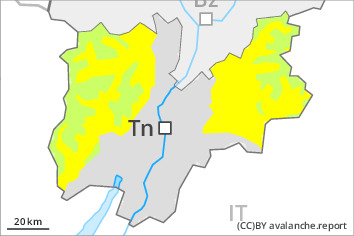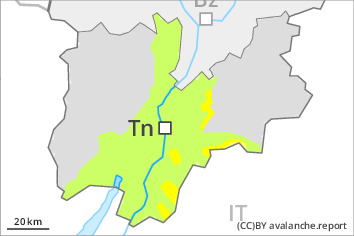
Danger level
 | 2800m |
|  |
|  | ||||
|  |
|  |

Wet and gliding avalanches are the main danger. Wet and gliding snow require caution.
On steep grassy slopes medium-sized to large gliding avalanches are possible. This applies especially on steep sunny slopes below approximately 2800 m, including on steep shady slopes below approximately 2600 m. Caution is to be exercised in areas with glide cracks.
As a consequence of warming during the day and the solar radiation, the likelihood of moist and wet avalanches being released will increase gradually, especially on steep sunny slopes below approximately 2800 m, as well as on steep shady slopes below approximately 2600 m.
The fresh wind slabs are in some cases prone to triggering in particular on northwest to north to east facing aspects above approximately 2400 m. Avalanches can especially at their margins be released, even by a single winter sport participant. Avalanches can release the wet old snow as well and reach large size in isolated cases. The number and size of avalanche prone locations will increase with altitude.
Snowpack
dp.10: springtime scenario
dp.2: gliding snow
Outgoing longwave radiation during the night will be reduced. The surface of the snowpack will only just freeze and will already soften in the late morning. This applies in particular on sunny slopes at intermediate and high altitudes, as well as on shady slopes below approximately 2600 m.
The more recent wind slabs are lying on soft layers on very steep shady slopes at high altitudes and in high Alpine regions.
Tendency
The weather will be exceptionally warm. Further increase in danger of wet and gliding avalanches as a consequence of warming.




